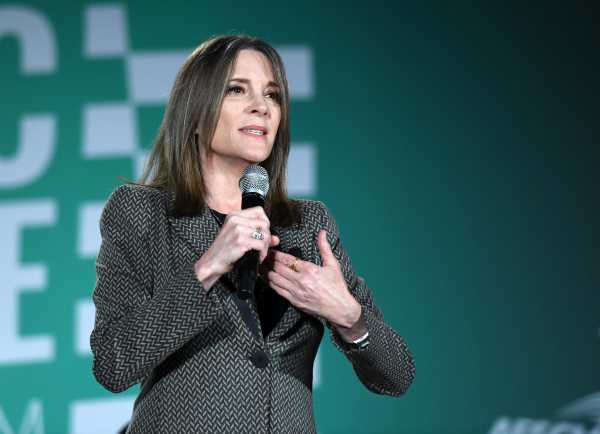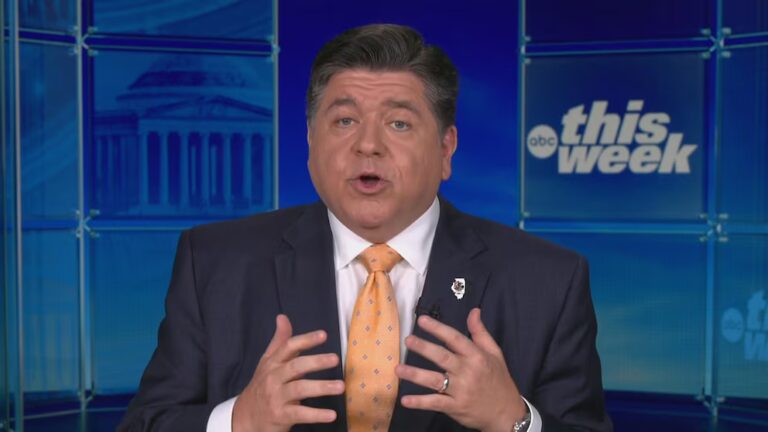
A week after making an impassioned argument for reparations at the Democratic debates, Democratic presidential candidate and self-help guru Marianne Williamson has released a formal plan calling for reparations for the descendants of enslaved people in the US.
The plan, released Wednesday, is similar to one she released in January on “racial reconciliation and healing,” which argues that it is “morally incumbent” on America to take aggressive action to atone for centuries of slavery and discrimination, the vestiges of which continue to affect black communities. The formal rollout of Williamson’s reparations plan is an indication that the candidate intends to keep reparations at the forefront of her campaign.
“When it comes to paying reparations for slavery, on an emotional, psychological and spiritual level, we cannot afford not to,” Williamson said in a statement emailed by her campaign. “Until we do, this cycle of violence that began in the 1600s and continues to this day will continue to haunt our psyche.”
The plan distinguishes Williamson from other 2020 contenders: She is the only candidate thus far to put forward a policy proposal on reparations. Her plan specifically calls for a financial allocation of $200 billion $500 billion that would be used to provide “payment of a debt that has never been paid.”
While a discussion of reparations and the significance of acknowledging the inequities created by slavery and discrimination has sparked an ongoing debate among the Democratic presidential candidates for several months, the majority of the candidates have not gone as far as Williamson. Instead, they have focused their attention on HR 40, a congressional bill that would create a commission to formally study reparations and the impacts of slavery and discrimination. That bill — and discussion of reparations more broadly — recently saw increased attention in June, when a congressional hearing on HR 40 was held on Capitol Hill.
Williamson’s plan also comes at a moment when, as she continues to face criticism for her promotion of harmful ideas about vaccines and antidepressants, and polls at somewhere between 0 to 1 percent, some pundits and reporters argue that her campaign should not be given much attention.
Even so, Williamson has become a trending topic in recent weeks, in part because of her forcefulness in discussing reparations and the importance of confronting racism in a way that higher-profile Democrats have not.
After the second Democratic debates in July, she drew some praise for using the national stage to argue that the accrued disadvantages of slavery and discrimination have harmed not only black communities but America as a whole.
“People heal when there is some deep truth-telling,” she said. “We need to recognize [that] when it comes to the economic gap between blacks and whites in America.”
These are the same points she highlights in her latest platform.
Williamson has talked a lot about reparations — but there are still gaps in her official proposal
The central point of Williamson’s plan is the aforementioned $200 billion to $500 billion that would be used to fund a reparations program. The fund would be used to make payments for 20 years and would be managed by a “Reparations Council,” a group of 30 to 50 African Americans that Williamson says would be “descendants of slaves with some scholarly, cultural or political connection to the issue of reparations.”
She stresses that it would be the council, not the US government, that would determine how the funds would be used. However, her plan does say that the money should be used for the “purposes of economic and educational renewal.”
“The Reparations Plan will not erase the history of slavery in America, nor of its ugly aftermath,” Williamson’s platform notes, adding that reparations are one part of a larger process. “But it will go far toward ending a painful, horrific chapter in American history, and will give future generations of Americans a chance to begin again on the higher ground of true reconciliation.”
Still, even as Williamson’s platform marks what is arguably the most ambitious reparations plan — and certainly the only one with actual numbers — proposed in the primary season, it leaves unanswered some important questions about its implementation.
The plan, for example, does not explain exactly where the hundreds of billions of dollars for the reparations program would be sourced from. Scholars and economists who have looked at reparations argue that a program would need to be funded in the trillions — far more than what Williamson allocates — to truly have a chance of changing the disparities, particularly the racial wealth gap, that have widened after centuries of slavery and decades of excluding African Americans from federal programs.
Williamson also does not explain the exact criteria used to determine how a descendant of enslaved people would qualify under her reparations proposal. (It’s likely that she would argue that eligibility would be determined by the Reparations Council.) Her plan also currently does not explain how membership in the council would be determined.
Given Williamson’s well-documented criticism of the 2020 Democrats’ focus on policy proposals, it is likely that these sorts of questions are secondary to the point she’s repeatedly made in interviews when asked about reparations: that they are a moral necessity that is owed.
“We need to realize that when it comes to the economic gap between blacks and whites in America, it does come from a great injustice that has never been dealt with,” Williamson said at the July debate, pointing to the fact that the 1865 promise of “40 acres and a mule” to the formerly enslaved made in Union Army Gen. William T. Sherman’s Special Field Order 15 was never fulfilled. “That great injustice has to do with the fact there were 250 years of slavery followed by another 100 years of domestic terrorism.”
Sourse: vox.com






